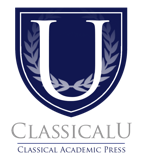Teaching Formal Logic
-
Lessons
Lesson 1: Teaching Logic Restfully with Rigor (Preview Content)4 Topics|1 Quiz -
Lesson 2: Logic as a Core Discipline (Preview Content)3 Topics|1 Quiz
-
Discussion: Logic in One's Life and Study (Preview Content)2 Topics
-
Lesson 3: Formal Logic vs. Informal Logic4 Topics|1 Quiz
-
Lesson 4: The Classical Origin and Medieval Recovery of Logic4 Topics|1 Quiz
-
Lesson 5: Formal Logic and the Three Acts of the Mind (Preview Content)4 Topics|1 Quiz
-
Lesson 6: Translating Arguments into Categorical Form4 Topics|1 Quiz
-
Lesson 7: Relationships of Opposition4 Topics|1 Quiz
-
Lesson 8: Relationships of Equivalence4 Topics|1 Quiz
-
Lesson 9: Categorical Syllogisms3 Topics|1 Quiz
-
Lesson 10: Determining Validity of Syllogisms3 Topics|1 Quiz
-
Lesson 11: Terms and Definitions3 Topics|1 Quiz
-
Lesson 12: Developing the End-of-Year Project4 Topics|1 Quiz
-
Discovery of Deduction Sample LessonsLesson 13: Chapter 5.2 The Square of Opposition2 Topics|1 Quiz
-
Lesson 14: Chapter 6.5 The Relationship of Contraposition2 Topics|1 Quiz
-
End of Course TestEnd of Course Test: Teaching Formal Logic1 Quiz
Assignments and Action Steps
Create a lesson plan describing and explaining the following questions:
(1) Which objectives does this chapter fulfill?
(2) In what measurable ways can I assess how the students are not only learning, but also applying this objective?
(3) What does student success look like with regard to this objective?
(4) What dialectic should I integrate to enhance the objective?
(5) Which executive function skills should I expect of the students in approaching this objective?
(6) In what measurable ways can I assess the mastery of my integration, and the students’ approach to this objective?
Combining Skills
Consider the methods for testing validity presented in ch. 8. Write an explanation listing your preferred methods from highest to lowest. Be sure to include reasons for why you prefer one method over the other, the usefulness of the methods, which ones you think will present challenges to your students, and how you might combine methods to demonstrate them to the class.


